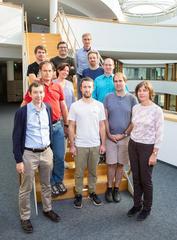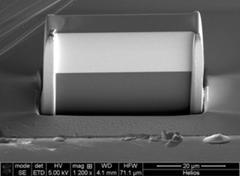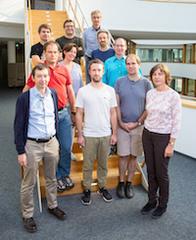URL: https://www.desy.de/news/news_search/index_eng.html
Breadcrumb Navigation
DESY News: Polish Synchrotron Radiation Society Award
News
News from the DESY research centre
Polish Synchrotron Radiation Society Award
A paper describing an innovative X-ray lens, manufactured by the team of DESY group leader Saša Bajt, has won the Polish Synchrotron Radiation Society Award 2018 for the best peer-reviewed publication in the topics of synchrotron radiation and free-electron laser research. The 'high numerical aperture multilayer Laue lenses' can produce sharper and brighter images of the nano world than were possible before. An advanced version of these lenses was also recently distinguished as one of the top ten microscopy innovations 2018 by the Microscopy Society of America.

Some of the members of the team working with Saša Bajt (right). Credit: DESY
The paper describes innovative analysis of these lenses using one dimensional interference method (ptychography) developed by Andrew Morgan in the group of Henry Chapman. The behaviour of the lenses was understood through advanced numerical wave propagation of Andrzej Andrejczuk (University of Bialystok, Poland) and Jacek Krzywinski (SLAC National Accelerator Laboratory, USA).

Scanning electron microscope image of the novel X-ray lens. The dark area is the substrate. The height of the lens is 16 micrometres. Credit: Mauro Prasciolu/DESY
Other authors on the paper include Mauro Prasciolu (DESY), Alke Meents (DESY), David Pennicard (DESY), Heinz Graafsma (DESY), Anton Barty (DESY), Richard Bean (DESY), Miriam Barthelmess (DESY), Dominik Oberthür (DESY and University of Hamburg), Oleksandr Yefanov (DESY), Andrew Aquila (European XFEL) and Henry Chapman (DESY and University of Hamburg)
Announcement of the PSRS Awards Committee:
http://www.synchrotron.org.pl/index.php/en/society/psrs-award




